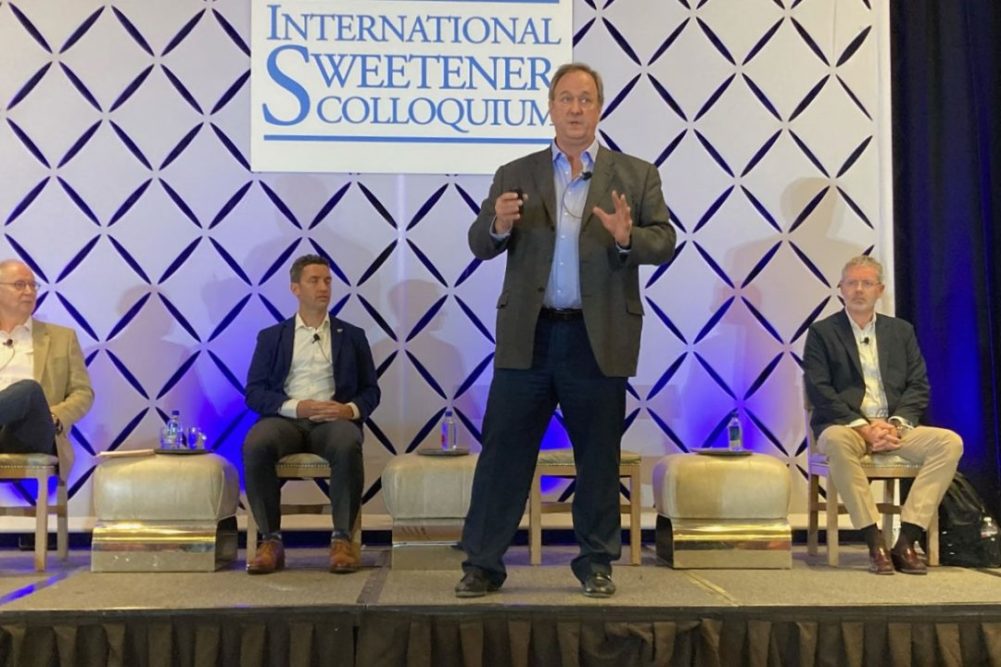TUCSON, ARIZ. — Jim Ritchie, president and chief executive officer of RedStone Logistics, said at the International Sweetener Colloquium March 1 that he expects logistics challenges to improve in the second half of 2022, but that freight rates will remain elevated.
Data pointed to freight issues beginning to improve late in the third quarter of 2022 and continuing to improve in the fourth quarter, Ritchie said. There were more truck drivers than before the pandemic, and more will be added, he said.
Small fleets (20 to 100 trucks) and medium-size fleets (100 to 1,000 trucks) have added capacity at record levels, he said, while megafleets (more than 1,000 trucks) haven’t added much capacity but have focused on other metrics to boost efficiency. But that doesn’t mean conditions will be back to pre-pandemic levels.
“Rates will never come back to where they were because the truck driver was under paid,” Ritchie said. “They caught up in the last two years.”
But he noted that drivers for small fleets were not working more. They in fact were working less for more money.
“It’s a quality-of-life thing,” he said.
He said tender rejections (loads turned down by truckers in favor of other loads) have declined, which generally results in lower freight rates, “but pricing relief has not occurred,” in part due to high diesel prices.
“I see that things are going to normalize, become more predictable,” Ritchie said.
However, he said he expected the increase in e-commerce that occurred during the pandemic to continue. He stressed that there was no such thing as “free shipping” as the buyer pays for it whether they are charged for it or not.
Ritchie said he also expects stabilization in the rail market, but that “players will fight to keep prices inflated because they are making record profits.”
Ports remain “the biggest wild card,” Ritchie said. The International Longshore & Warehouse Union’s three-year contract covering about 22,000 workers at 29 West Coast ports expires July 1. He said the number of ships waiting to unload at ports will “get worse” as a matter of leverage for the ILWU. A major point of contention is automation, which ports see as the answer to improving port operations but that unions know will cost jobs. The union could lose at least 40% of its membership, he said.
He said shippers should try to make procurement continuous to smooth out freight demand. He added that shippers also should seek to become a carrier’s “shipper of choice” so their loads will be favored over other shippers.
“Don’t leave truckers waiting,” he said. “Challenge the status quo.”

